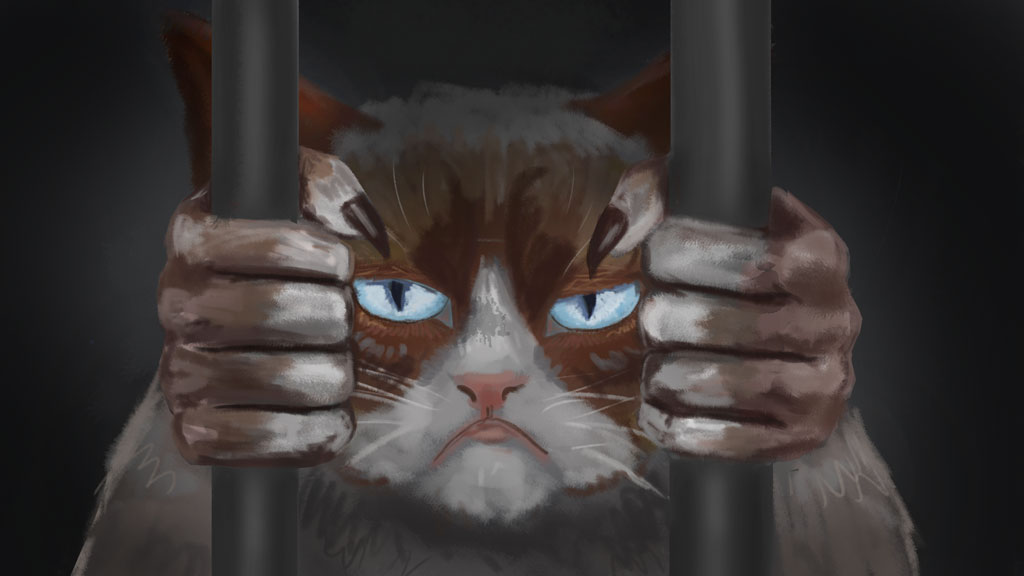The internet has grown to the point where it has become the main method of global communication, especially for millennials. Memes are one popular type of communication that came out of this global interaction. As memes primarily represent meaning with visuals, they can be used to communicate with people across cultures and languages.
However, there is a chance memes will be threatened in Europe with a recent passage of copyright reforms. These new laws may radically change the way the rest of the world interacts with people from these countries.
Articles 11 and 13
Articles 11 and 13 are recent provisions of the European Parliament's Copyright Directive. In order to comprehend why these articles were created, it’s important to have an understanding of what makes material copyrighted.
Copyrighted materials are someone’s intellectual property — whether that be their writing or their art. The Copyright Reform exists to ensure these materials will be successfully credited, as well as have companies give these original creators pay for referencing their works.
According to a piece published by The Verge, Article 11 more specifically deals with “[giving] publishers the right to ask for paid licenses when their news stories are shared by online platforms” and Article 13 causes "online platforms are more liable for content uploaded by users that infringes copyright.”
The Copyright Directive, also known as the Directive on Copyright in the Digital Single Market, is the European Parliament’s way of updating their 20-year-old copyright legislation to better fit the current technological age. This directive deals more with digital age companies, such as media platforms like Twitter or Facebook, and pushes them to take greater responsibility in taking down and rightfully sourcing copyrighted material.
On paper, the European Union’s stance seems to fight for content creators, and allows people to protect the rights to their creations. However, the directive has been causing people to fear for materials that don't infringe on copyright law.
So where do memes tie into this?
From written jokes to images, memes generally use copyrighted material to construct their jokes, and they’re often reposted onto several media platforms. In the face of the Copyright Directive, memes can be classified as infringing copyright law.
Potential Problems
Some of the concerns critics have with the directive is the vagueness of how the directive defines copyright. Professor Mike Johansson, senior lecturer in the School of Communication, said that the main problem with the directive is that it avoids using explicit terms.
"We don't know how [the legislators] are going to [enforce these laws]," he said.
Some critics believe that large corporations like Facebook and Twitter will simply make algorithms to address the new laws, since no one has time to go through each piece of media on that platform. So for example, when a Twitter algorithm is trying to find and purge copyright infringing tweets, it may delete a meme whilst searching and deleting copyrighted materials
Technology may be advanced, but programs still have trouble identifying the origin of posted copyrighted material. For that reason, American copyright laws accept materials like memes because of their Fair Use law. The EU has stricter policies. Therefore, on an international platform like Twitter, an algorithm may have difficulty respecting both laws.
Johansson also expressed concerns about how Europe would continue to interact with the rest of the world, as memes are a big part in this reciprocal communication.
“[The articles] would suck the fun out of the internet [for the people] ... at a minimum. At a maximum it could upset the way communication is made,” he said.
Small corporations, Johansson argued, would have to find a roundabout way to avoid using any references to sources not owned by their corporation. For example, a small news company would be less inclined to cite materials from another, much larger company, and would instead choose not to present that information at all to their audience. This could lead into a termination of reciprocal interaction between businesses, and could limit the amount of material their audiences can receive.
What’s not wrong with the articles?
Professor Nickesia Gordon is an associate professor in the School of Communication who specializes in media globalization. She has a different perspective on the matter.
"We are now looking at the time where digital labor [is] being exploited ... and [the creator] gets nothing ... We’re kind of these ‘net slaves’ that are making all of this quantity for these huge corporations — who are making a lot of money off of that — but we get nothing,” said Gordon.
Gordon also expressed skepticism on the influence the directive has over the internet itself.
“It’s just European countries, [and even in these countries] they don’t necessarily have to abide [by the new articles].” Just like in America, where states are able to interpret federal law for their own means, so can the European countries as part of the EU.
Gordon said that the media is making the law bigger than it really is.
“We really don’t know how it’s going to play out in the end of the day. These are all speculations, a lot of them bordering on hysteria,” she said.
Is this the end?
While Europeans adjust to this new directive, the citizens are already finding ways to bypass these constraints, in terms of memes.
"The ever-resilient internet is finding ways around this legislation by — yes, you guessed it — making more memes, this time with a creative way of avoiding any copyright laws," said Greg Evans, in an indy100 article.
These new memes include, but are not limited to, both redrawing the source material, and writing descriptions of the images rather than using the copyrighted materials itself. It has opened a new level of humor to meme culture, while successfully demonstrating people’s ingenuity and creativity.
This shows that despite the the potential struggles surrounding the Copyright Directive, there is hope for memes.








